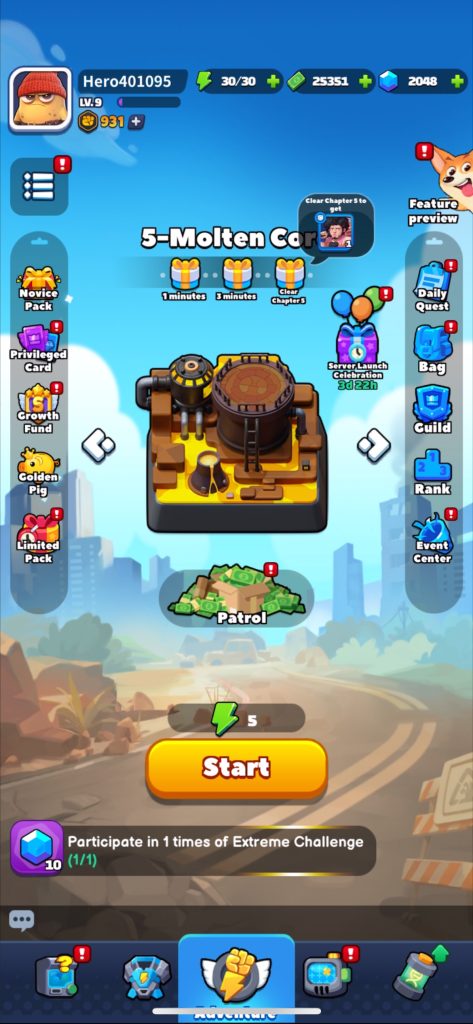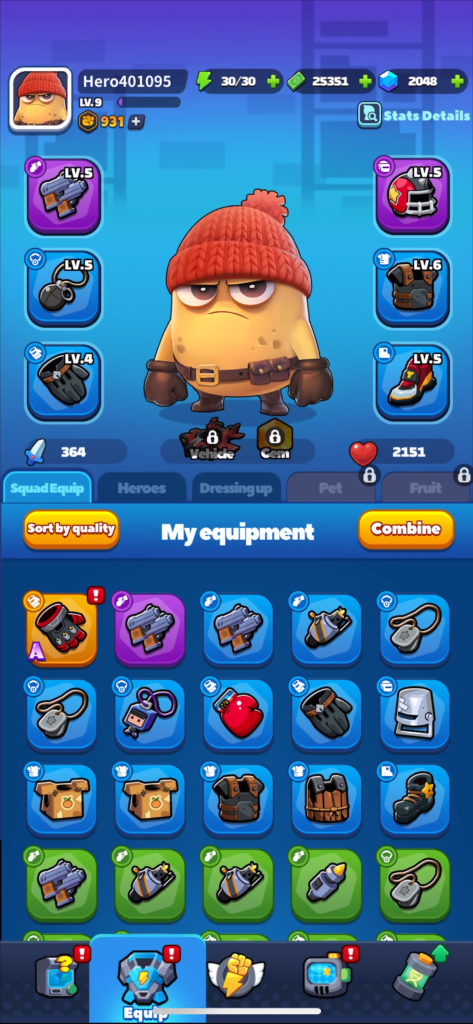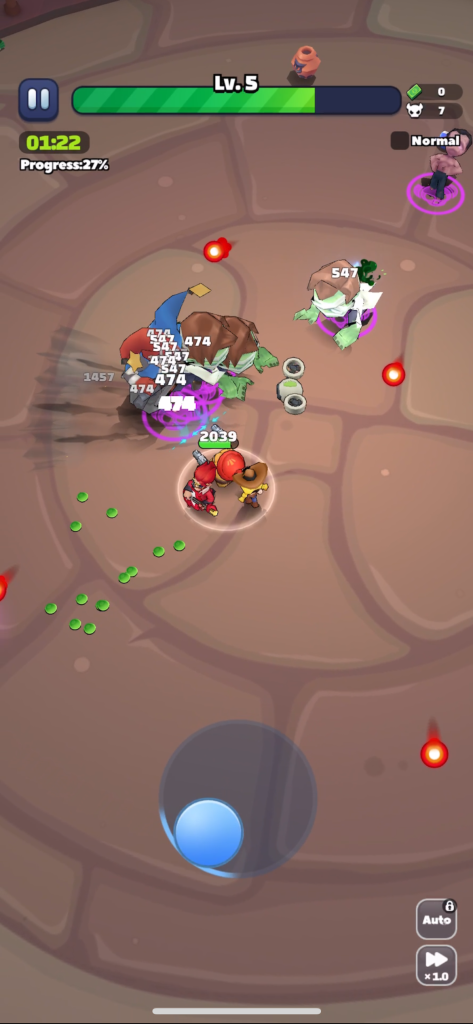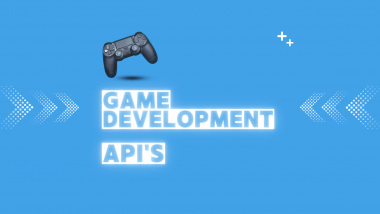Fighting for market share in the increasingly crowded mobile games industry is a lot like trying to survive a zombie apocalypse, so it’s fitting that the game we’re covering today features that familiar scenario.
This is Zombie.io, the latest title from the Chinese mobile game studio Joy Net Games, the makers of the respectably popular mobile RPG Legend of Mushroom. While Legend of Mushroom played on the RPG structure of AFK Journey and other similar games, Zombie.io is a roguelike RPG that is structured (and titled) very similarly to Survivor.io – which itself is modeled on the gameplay of Vampire Survivors and coupled with a variety of different monetization methods that facilitate its free-to-play availability.
In this article, we’ll be taking a look at the many different facets of Zombie.io’s complex monetization to see how it’s doing, and also how it compares to its closest competitor – Survival.io.

Let’s get started!
Like most mobile games, Zombie.io doesn’t show its full hand right away, and for good reason.
After a few hours of play, the home screen goes from sparse and simple to almost overwhelming – becoming absolutely spattered with buttons, exclamation points, and other features to grab the user’s attention. This approach to UI is mirrored by the game’s economy, which could be best described as “complicated”.
But before we dig into economy and monetization, let’s talk a little more about Zombie.io as a game.
The title has been in a “soft launch” state for about a year at the time of writing, although it was only available in limited regions (Just the U.S., France, and Germany – markets that tend to have deep pockets). After what was presumably a year of development based on player feedback, Zombie.io received a global launch on April 26th. This puts the game about two years behind Survival.io in terms of time in the market, which is relevant as the two games fill the same space in the mobile game market.
At the moment, AppMagic is reporting Zombie.io at around 2 million downloads and $2 million in revenue, although these are still very early numbers as the game has only been available for a limited time. Breaking these stats down even further, it seems that Zombie.io is clocking $120k in revenue and 70k downloads per day. It’s possible that these numbers have been boosted thanks to the game’s featured status on the iOS App Store, which is typically a boon for game adoption.
Now, when we compare those numbers to Zombie.io’s closest competitor – Survivor.io – a pretty stark picture is painted.
Returning to AppMagic, we see that Survivor.io has only brought in 1 million downloads over the past 30 days, but its revenue over the same time period is at around $5 million. If we expand the scope to encompass the lifetime of the game’s availability, we see that it has around 50 million downloads under its belt along with somewhere in the ballpark of $200 million in revenue.

Survivor.io’s developer/publisher Habby made excellent use of TikTok marketing and UGC to get their game in front of potential players, which gave it a strong presence fairly early in its lifecycle. Zombie.io hasn’t resorted to that marketing style as of yet, but it would be interesting to see these games compete on a more even keel. The genre they share obviously has legs since it appears to be very popular thanks to a rather addictive gameplay loop, but we will just have to wait and see where the chips fall over time.
Now, back to Zombie.io’s monetization and revenue-driving tactics.
Mobile game monetization always begins with hooking players and encouraging strong engagement, and Zombie.io accomplishes this crucial first step with a tried and true method – onboarding events. If you’ve played a mobile game in the past ten years, then you’re familiar with these events. They typically involve daily quests that have fairly simple requirements in exchange for valuable rewards – the kind of low-hanging fruit that would entice players to sign in periodically if only to claim those rewards.
Kickstarting Zombie.io’s time on app stores is the “Server Start Event”, which features a variety of daily quests that guarantee resources and have a chance of paying out an S-tier hero or gear, growth funds, and several week-long quests that require the player to interact with some part of the game for seven days straight in order to gain its rewards.

The most interesting of these seven-day quests is the Ad-Viewer Event, which is exactly what it sounds like. It requires players who join the event to view a certain number of ads per day, and after a week of being bombarded with ads, they’ll be rewarded with a free Epic-level hero. We’re going to talk more about Zombie.io’s use of ads a little later, but for now, we can safely say that joining this event makes plenty of sense seeing as you’ll be presented with tons of ads either way.
Now, something Zombie.io does that could be considered ingenious or sinister depending on how you look at it, is what the “Daily Quests” actually entail.
For instance, there are simple, standard quests like “Log into the game”, but then there are others like “Top up any amount”, “Obtain stamina 1 time by purchasing or watching videos”, and – the most egregious – “Make daily store purchases 1 time”. These are quests that actively require the player to spend money in the game, on a daily basis, in order to complete them. Quests like these appear to be the vast majority of quests, and they outnumber the simpler, gameplay-based quests by quite a large margin.
Make of that what you will, but as long as we’re talking about the in-game store, let’s talk about what you can actually purchase with your hard-earned money in Zombie.io.
The first potential purchase presented to players is the “Novice Pack”, which bundles a number of resources and free draws into a single purchase. The page for this pack has a sticker that states “16888% value”, although it’s not really clear how that percentage is being calculated. It’s presumably there to entice players into buying the bundle with the understanding that they are getting insane value for their money, and this isn’t the only place you’ll see a bundle with a badge like that. The store is rife with them.
The in-game store itself is separated into two pages: Equip Supply and Daily Shop. The Equip Supply page offers things like the Chapter Pack, Equip Box, and Supply Box.
The Chapter Pack is a discounted bundle (1100% value) that includes a large number of banknotes (in-game currency used for upgrades), gear blueprints (resources needed for upgrades), and keys.
The remaining two options on this page are Zombie.io’s loot box equivalents. The Equip Box pays out gear in exchange for diamonds, with every ten draws guaranteeing an Epic-level gear. It’s worth noting that the Equip Box will only accept diamonds.
The Supply Box on the other hand has two options: the Newbie Supply Box and the Advanced Supply Box. These loot boxes take silver and gold keys respectively, which are resources you can obtain through play or through bundle purchases. After the first few hours, the acquisition rate of both types of keys slowed to a crawl.
This is normal for this type of game feature, as it tends to drive revenue eventually. However, if a player wanted to continue to enjoy the benefits of Supply Boxes without paying into the game, they could take advantage of what seemed to be Zombie.io’s primary form of monetization in our time with the game – ads!
This game is heavily focused on ad revenue, offering ads as an option when it comes to obtaining resources and other rewards that amplify gameplay. When it comes to the Supply Boxes – Newbie Supply Boxes offer an ad reward every twelve hours, and Advanced Supply Boxes can be claimed with an ad once every 24 hours.

On the Daily Shop page of the game store, you have Daily Offer, Weekly Offer, Diamond Shop, and Banknote Shop sections. Purchases range in cost from 99 cents to 99 dollars, and each section has a “free” reward that pays out after watching an ad. A sneaky trick we noticed on those ad rewards is the presence of a red and white exclamation point icon. These are present all over the UI as a means of notifying you when there’s something new to look at in any given section, but they also serve the diabolical purpose of driving certain people absolutely insane.
If you’re able to ignore these icons, that’s fair enough, but if you want to clear all of the icons on your UI for any reason, you’re going to be watching ads for quite some time. Several hours in, we experienced gameplay sessions where twenty to thirty ads were presented to collect their rewards before ever entering gameplay. Even after a short time, Zombie.io effectively conditions the player to associate exclamation icons with ads, and ads with rewards, which is a pretty smart way to go about your ad monetization in a mobile game.
Outside of ads, Zombie.io is monetized further through the availability of several other purchases presented to players, all of which are conveniently lined up on the left side of the home screen. Following the Novice Pack is the Privileged Card page. This page contains a Monthly Card, a Lifetime Ad-Free Pass, and a Super Lifetime Card.
The Monthly Card is a $4.99 purchase that offers boosts for Patrol Mode and player Stamina (a resource that determines the number of matches that can be played), as well as diamond bonuses that can be collected on a daily basis for an entire month. This appears to be the only option in this menu that has the ability to be repurchased.
After that, there’s the Lifetime Ad-Free Pass, which is exactly what it sounds like. Instead of sitting through endless ads, you can skip them and claim their rewards for just $9.99. This pass also includes benefits like auto-battling and increased battlefield speed (1.5x).
Finally, there’s the Super Lifetime Card. For $29.99, it entitles the player to an increased friend count limit, increased camp stamina limit, further increased battlefield speed (2x), and additional world boss attempts among other perks. However, the most valuable benefit of this card is probably the daily allowance of 600 diamonds that holders can collect.

Going one step down from the Privileged Cards, there are the Growth Funds, which act like a type of battle pass system for Zombie.io. There are Chapter Funds and Level Funds, and each of those is further broken down into Intermediate and Advanced funds.
Here is what each fund level costs:
Chapter Fund
- Free Tier
- Intermediate: $9.99
- Advanced: $19.99
Level Fund
- Free Tier
- Intermediate: $4.99
- Advanced: $14.99
These funds pay out resources and bonuses at specific milestones, and although there is a free tier for each that has considerable rewards, the Growth Fund pages are presented in a way that encourages players to purchase all levels so as not to miss out on rewards.
Finally, after the Growth Funds – there is the Golden Pig.
This piggy bank system stores diamond rewards as you play, but it can only store so much. Once it is full, you need to pay to “break the piggy bank open” to reset it so it can collect more diamonds. While it sounds unnecessary, it’s just a 99-cent purchase – far from the most expensive microtransaction in Zombie.io.
As mobile games continue to evolve, their monetization structures grow more and more complex. Zombie.io might only be the most recent example of this phenomenon, but it also has the potential to set the standard for what is acceptable in the market going forward. However, given how fun the core gameplay is, this will definitely be one game to keep an eye on.






